We often come across posts about and – more abundantly – lists of The World’s Weirdest Foods. Most of them are considered delicacies where they originate. But the vast majority are so far out of the Western wheelhouse that just reading about them is enough to make some gag…
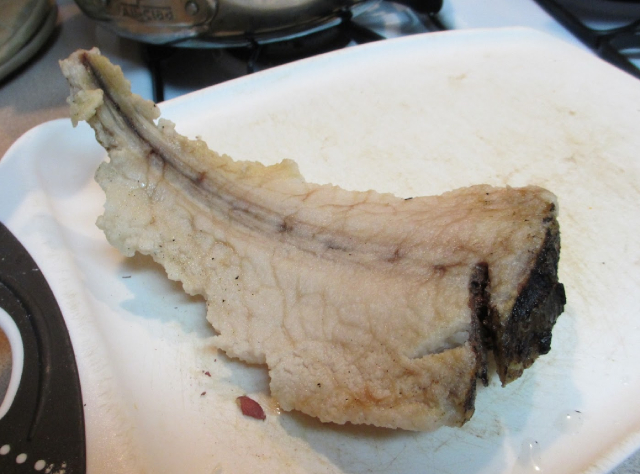 A freshly cooked Beaver Tail: A northern delicacy you might actually dare to try…
A freshly cooked Beaver Tail: A northern delicacy you might actually dare to try…
The photos that always accompany Weird Food stories do even less to encourage us to consider tasting the tiniest morsel of, say Italian Maggot Cheese or Cambodian Deep Fried Tarantula.
On the other hand, the internet has ensured we’re all familiar with the tamest of Weird Foods: Who among us hasn’t heard of Escargot (French snails), Asian Chicken Feet, Tripe (stomach lining), Chinese Century Eggs and good old Scottish Haggis?
But what of the vast middle ground? I’m most interested in Weird Foods that I might actually consider sampling.
Exploring the middle ground
The middle-of-the-road weird stuff rarely gets any airplay, let alone headlines. That’s probably bcause they are not as dietarily extreme as the exotics at the far-weird end of the continuum. I intend to remedy that egregious oversight without further delay.
On our menu today
Gellied Moose Nose: Northern North America’s analogue of European Head Cheese. But this aboriginal creation takes somewhat longer to prepare. That’s because you have to first toast or scald the snout to help remove the bristly nose hairs and loosen the skin. Then the lean meat is boiled until tender, cooled, coarse chopped and preserved in gelatine.
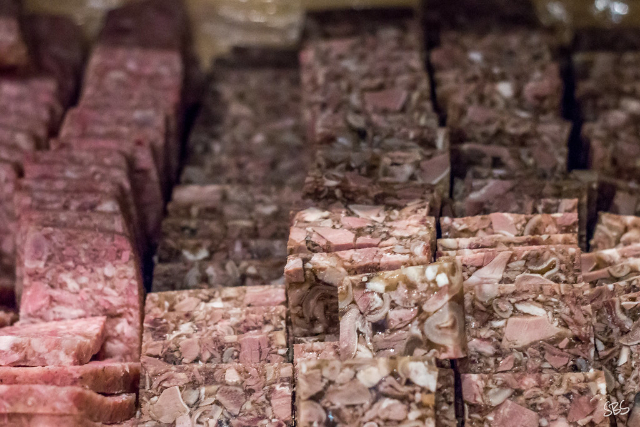
The resulting loaf can then be prepared for eating in a number of ways. You can slice and serve it as is, in a sandwich, or stew it in its own juices.
According to one recipe site, one serving of Gellied Moose Nose is just 49 Calories, 49 g of fat (none saturated or trans), zero cholesterol, 17 mg sodium, 547 mg of carbs, 4 g fibre and 7 g protein.
Beaver Tail: No, not the famous Ottawa Valley pastry, but a real beaver’s tail. The same folks who invented Jellied Moose Nose have loved beaver tail for aeons. It’s fitting they even eat the tail. Native North American lore holds that you must use every possible part of any animal you hunt. And the beaver is also the totem for industriousness, productivity and persistence.
Henry Beaver (just a coincidence) of Fort Smith, NWT, told Northern Journal exactly how to cook it:
- After cutting the tail off, take a stick – preferably a green willow – and insert it where the tail was once attached to the body.
- Hold the tail flat over an open fire, rotating it until the outer black skin bubbles and dries, and can be peeled off easily. The tail will curve from the heat as it cooks.
- Peel the charred skin off like you would a baked potato, revealing the white, greasy flesh underneath.
- Boil the tail over the fire in a pot of water for an hour or more, or until the flesh is tender and easy to cut.
- Enjoy with salt and pepper, or a little ketchup or mustard. The tail should cut easily and be easy to chew.
Fried Rattlesnake: Just what it says. The hardest part, of course, is catching, dispatching, beheading and de-rattling the snake. The good news it, many specialty food shops – and just plain supermarkets in the southwest – now offer frozen Rattlesnake meat, already cleaned if not deboned. Some enthusiasts say you should boil the meat first to remove the bones.
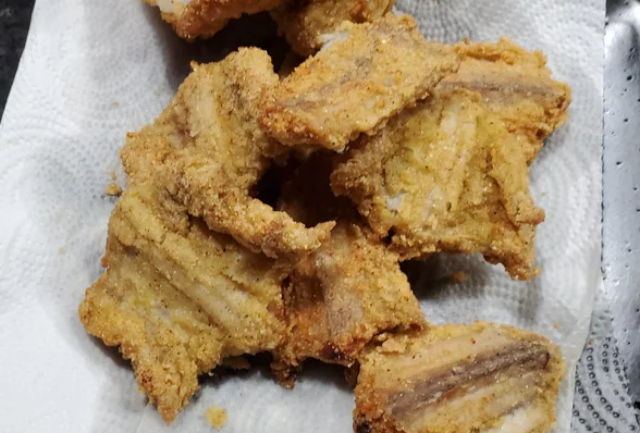
Cowboy Kent Rollins, a well-known Oklahoma Chuckwagoneer and cookbook author, says to soak the meat in buttermilk overnight. Then, just coat it in flour like you would a piece of fried chicken and toss (carefully) into the hot oil. It should cook in just a few minutes. Be sure to turn the pieces frequently to ensure a uniform golden brown finish. Let drain on paper towels for a minute or so before serving piping hot. And, yes, they claim it does taste just like chicken.
There are staunch supporters for other preparation methods, including barbecuing, smoking and grilling.
Rocky Mountain / Prairie Oysters: There may be other regional names for this dish, but they all refer to Bull’s testicles. Yup. For those who didn’t already know, the are considered a western delicacy. And they’re readily available in butcher shops and supermarkets in cattle country.
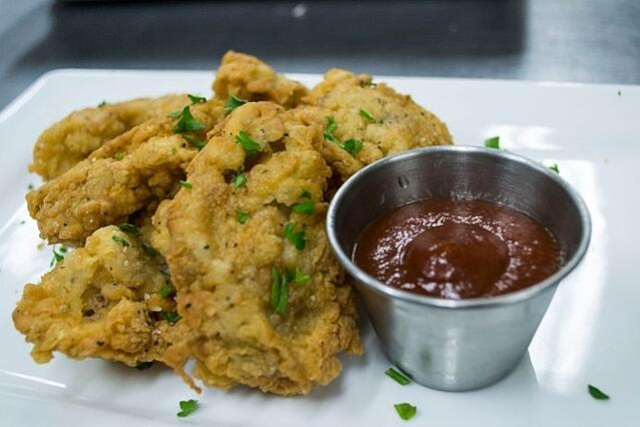
According to Wikipeda’s rather clinical description, “The organs are often deep-fried after being skinned, coated in flour, pepper and salt, and sometimes pounded flat. This delicacy is most often served as an appetizer. Though some say they deserve main dish status.
In Texas and Oklahoma, they’re called calf fries; in Spain, Mexico and South America, criadillas; in France, animelles.
Aligator: A Southeastern U.S. specialty. For the famous spicy Louisiana version, you start with what the Cajun cooks call tenderloin of gator tail. Cut the meat in chunks and toss with Cajun spices, garlic powder and onion powder and let sit for up to half an hour.
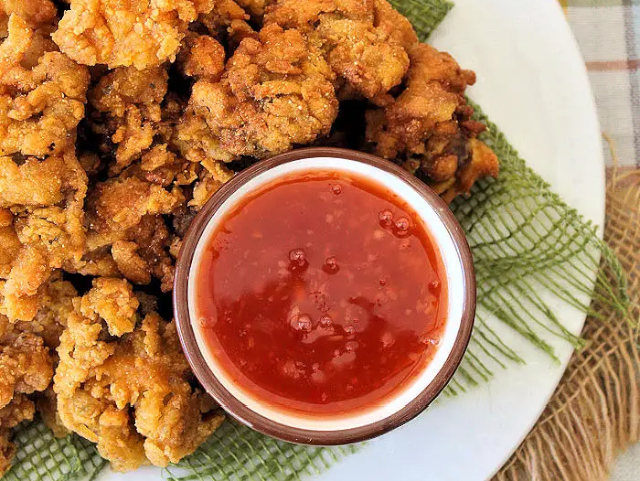
While the gator is resting, set up a breading station using full fat buttermilk mustard and eggs as a liquid, and a mix of flour and corn starch as breading. More Cajun spice, too, if you like. Cook a few pieces at a time in 350 F oil then drain on paper towels.
On the other hand, some folks – notably Old Florida families, say you must grill gator over hot coals to get the most out of it.
Either way, try drawn butter as a side dip. The first thing I’d try is Thai Sweet Chili Chicken Sauce. Sweet, sour and spicy, and a perfect complement to the gator.
Kopi Luwak: Also known as Civet Coffee. If you’ve seen the movie The Bucket List, you’ll already know the punchline to this one. This rare and expensive coffee is the is produced when the Sumatran Civet cat (see photo, top of page) eats raw coffee berries. Its digestive system breaks down the berry leaving the pit – a pair of coffee beans.
 Edward Cole (Jack Nicholson) prepares to savour his beloved, rare
Edward Cole (Jack Nicholson) prepares to savour his beloved, rare
Kopi Luwak coffee in the 2007 hit movie The Bucket List…
Folks gather up the beans clean and dry them and sell them to coffee brokers for anywhere up to (US)$500 lb. / (US)$1,100 kg. By the time it gets to your cup at that upscale, downtown coffee bar in North America, it goes for $35 to $80 per cup.
Is Kopi Luwak really the best coffee in the world? Enjoy Java says the civets eat only the ripest, choicest coffee berries. And those in-the-know know those make the best coffee!
There’s lots more to discover
That’s just a small selection of not-so-creepy exotic foods you can try without totally abandoning your tastes or your wits. There are lots more to discover, if you just take the time to poke around the internet a bit and keep your eyes open for regional specialties when you travel…
~ Maggie J.

